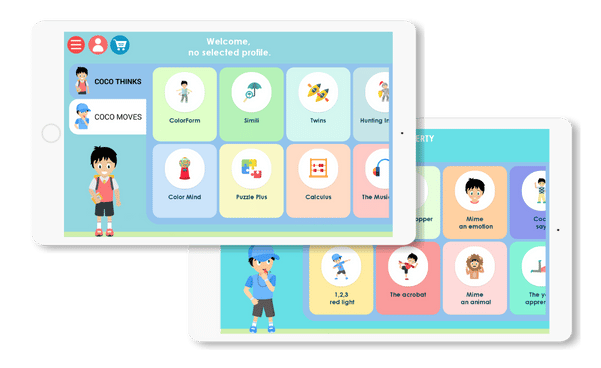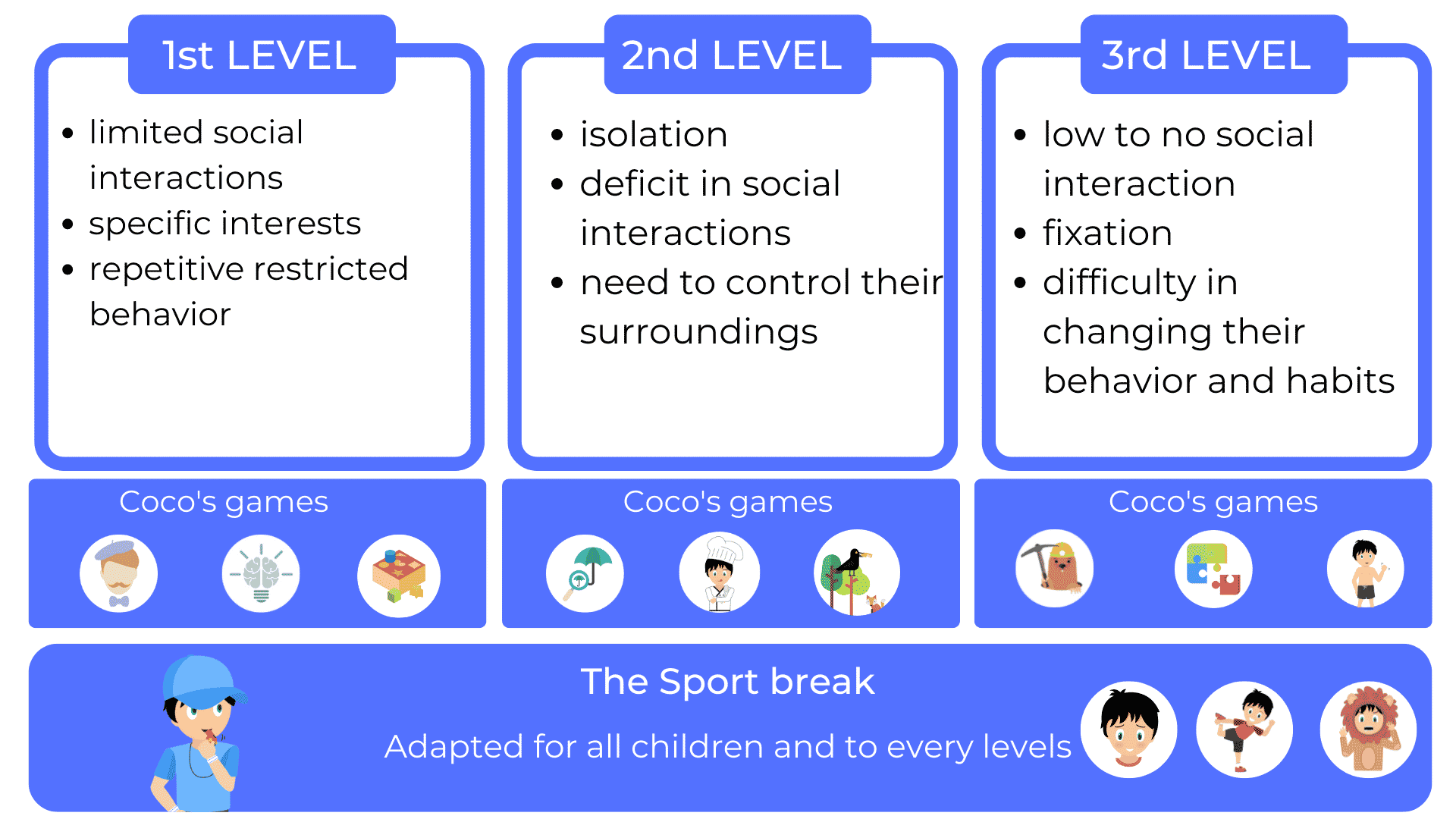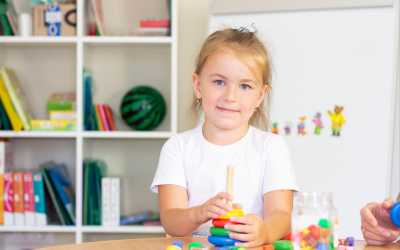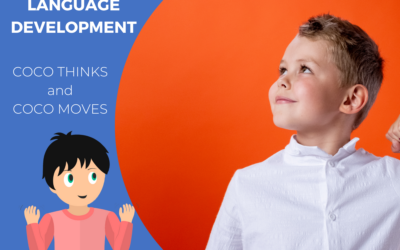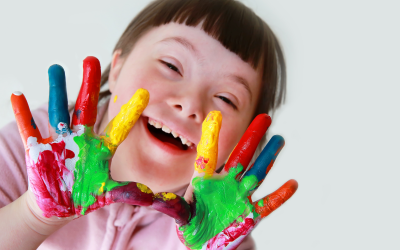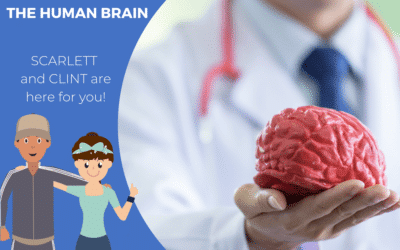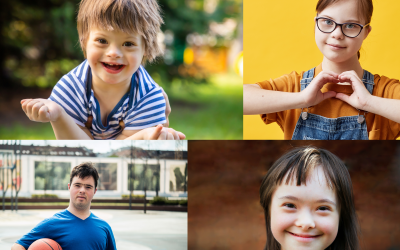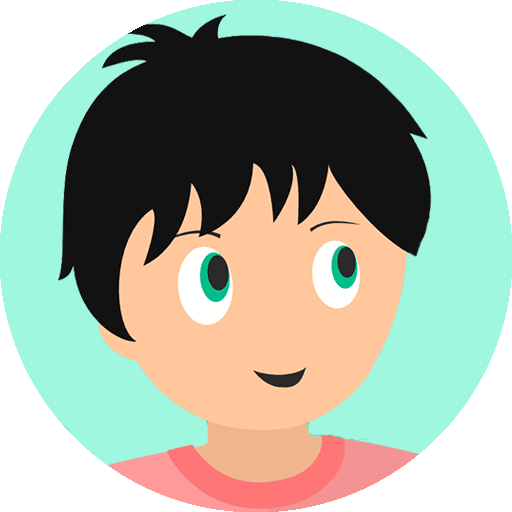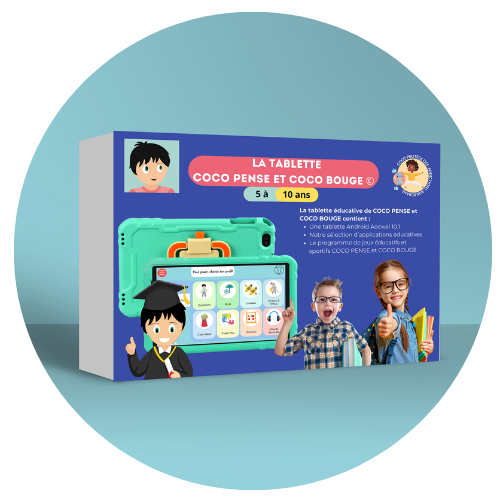Autism spectrum disorder (ASD) is typically diagnosed in early childhood, usually around the age of 2-3 years old. However, some children may not receive a diagnosis until later in childhood or even into adolescence or adulthood.
First signs and symptoms of autism
The signs and symptoms of autism can vary widely between children, and some children may show no signs of autism until later in childhood. However, there are some common early signs of autism that parents and caregivers can watch for. These include:
– Delayed Speech and Language Development: Many children with autism have delayed speech and language development. They may not start speaking until later than other children, and when they do start speaking, they may have difficulty with language skills such as syntax, vocabulary, and grammar.
– Lack of Eye Contact: Children with autism may avoid making eye contact with others. They may not respond to their name being called, and they may seem to be in their own world.
– Repetitive Behaviors: Children with autism may engage in repetitive behaviors, such as rocking back and forth, spinning, or flapping their hands. They may also have very specific routines and become upset if their routine is disrupted.
– Difficulty with Social Interaction: Children with autism may have difficulty with social interaction. They may not know how to initiate or respond to social cues, and they may not understand the concept of taking turns or sharing.
– Sensory Sensitivities: Children with autism may be sensitive to certain sensory stimuli, such as loud noises or bright lights. They may become upset or overwhelmed by these stimuli and have difficulty coping.
It’s important to note that not all children with autism will show these signs and symptoms, and some children may show signs of autism that are not listed here. If you are concerned about your child’s development or behavior, it’s important to speak with a healthcare provider or seek a referral for a diagnostic evaluation. Early diagnosis and intervention can help children with autism to reach their full potential and improve their quality of life.
First diagnosis of autism
It’s important to note that the diagnosis of autism requires a comprehensive evaluation by a qualified healthcare provider or autism specialist. If you are concerned about your child’s development or have questions about the diagnosis of autism, it’s important to speak with a healthcare provider or seek a referral for a diagnostic evaluation.
The diagnosis of autism is typically made through a comprehensive evaluation process, which may include the following:
- Developmental Screening: A healthcare provider may conduct a developmental screening to determine if a child is meeting developmental milestones, such as social interaction, communication, and behavior. This may involve asking questions and observing the child’s behavior during a routine check-up.
- Diagnostic Evaluation: If a developmental screening raises concerns about a child’s development, a healthcare provider may refer the child for a diagnostic evaluation. This evaluation may include a combination of assessments, such as observation of the child’s behavior, interviews with the child and their family members, and standardized tests.
- Autism-Specific Assessment: A healthcare provider or autism specialist may conduct a specific assessment to diagnose autism. This may include standardized diagnostic tools such as the Autism Diagnostic Observation Schedule (ADOS) or the Autism Diagnostic Interview-Revised (ADI-R).
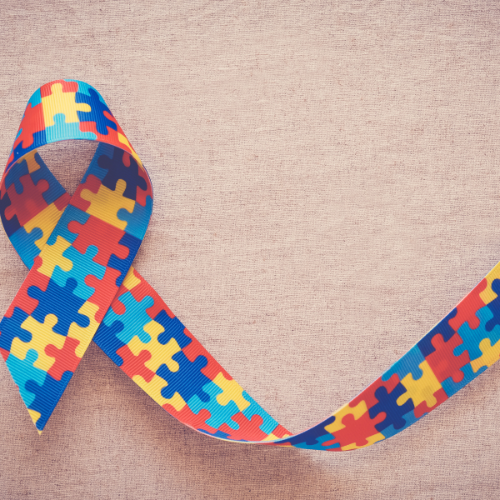
Autism is typically diagnosed by a team of healthcare professionals, which may include the following:
- Developmental Pediatrician: A developmental pediatrician is a medical doctor who specializes in the diagnosis and treatment of developmental disorders in children. They may conduct developmental screenings and diagnostic evaluations to assess a child’s behavior, communication, and social interaction.
- Child Psychologist: A child psychologist is a mental health professional who specializes in the diagnosis and treatment of mental health conditions in children. They may conduct psychological evaluations and assessments to diagnose autism and other developmental disorders.
- Child Psychiatrist: A child psychiatrist is a medical doctor who specializes in the diagnosis and treatment of mental health conditions in children. They may conduct psychological evaluations and assessments to diagnose autism and other developmental disorders, and may also prescribe medications to treat associated symptoms.
- Neurologist: A neurologist is a medical doctor who specializes in the diagnosis and treatment of neurological conditions. They may conduct medical and neurological evaluations to rule out other conditions that may be causing a child’s symptoms, and may also conduct brain imaging studies to help with diagnosis.
- Speech-Language Pathologist: A speech-language pathologist is a healthcare professional who specializes in the diagnosis and treatment of communication disorders. They may conduct assessments of a child’s speech and language skills to identify delays and difficulties that may be associated with autism.
A diagnosis of autism should only be made by qualified professionals with experience in diagnosing and treating autism spectrum disorders. If you have concerns about your child’s development or behavior, you should speak with your child’s pediatrician or seek a referral to a specialist who can conduct a comprehensive evaluation. Early diagnosis and intervention can be critical for improving outcomes for children with autism.
What to do when my child is diagnosed with autism?
If you suspect that your child may have autism or if your child has been diagnosed with autism, there are several steps that you can take to help your child and your family:
- Seek Support: Receiving a diagnosis of autism can be overwhelming and emotional for families. Seek support from family, friends, and professionals who can provide guidance and understanding. You may also find it helpful to connect with support groups or online communities for families of children with autism.
- Find Early Intervention: Early intervention is critical for children with autism. Speak with your child’s pediatrician or a specialist to identify appropriate interventions and therapies that can help your child with social, communication, and behavior skills.
- Educate: Educate yourself about autism and the available treatments and therapies. This can help you make informed decisions about your child’s care and treatment.
- Build a Team: Build a team of healthcare professionals, therapists, and educators who can work together to support your child’s development and well-being.
- Create a Structured Environment: Children with autism often thrive in structured environments with clear routines and expectations. Create a predictable and consistent environment at home to help your child feel secure and comfortable.
- Take Care of Yourself: Caring for a child with autism can be stressful and exhausting. Take care of yourself physically and emotionally, and seek support and self-care activities when needed.
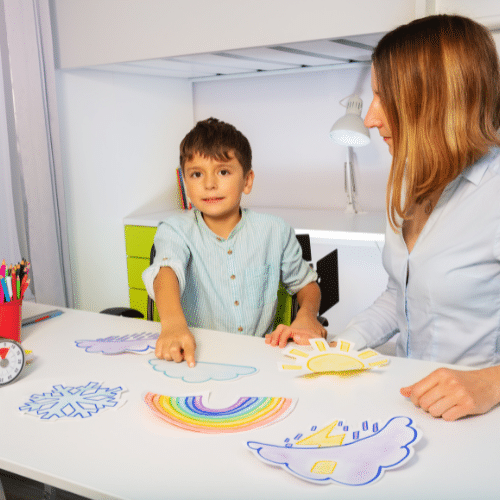
Remember, every child with autism is unique, and there is no one-size-fits-all approach to treatment and support. Work with your child’s healthcare professionals to develop a personalized plan that meets your child’s individual needs and strengths. With early intervention and ongoing support, children with autism can lead fulfilling and rewarding lives.
Technologies that can help a child with autism
Autism is a developmental disorder that affects communication, social interaction, and behavior. While there is no cure for autism, there are many interventions and therapies available to help children with autism learn new skills and behaviors. In recent years, technology has emerged as a powerful tool to support children with autism and their families. Here are some technologies that can help children with autism:
– Communication Apps: Many children with autism have difficulty with verbal communication. Communication apps can help children with autism to communicate their needs and wants. These apps can include picture-based communication tools, speech-to-text apps, and video-based communication tools.
– Virtual Reality: Virtual reality technology can provide a safe and controlled environment for children with autism to practice social skills and learn new behaviors. Virtual reality simulations can be used to teach social cues, problem-solving skills, and emotional regulation.
– Sensory Integration Apps: Children with autism may have sensory processing difficulties, which can affect their ability to process and respond to sensory input. Sensory integration apps can help children with autism to learn how to regulate their sensory input and respond appropriately to different sensory stimuli.
– Behavior Tracking Apps: Behavior tracking apps can help parents and caregivers to track a child’s progress and monitor their behaviors. These apps can track behaviors such as sleep patterns, eating habits, and social interactions. This information can help parents and caregivers to identify patterns and make adjustments to the child’s therapy plan as needed.
– Social Skills Apps: Social skills apps can provide children with autism with opportunities to practice social skills in a safe and controlled environment. These apps can include games, videos, and interactive exercises that teach social skills such as turn-taking, eye contact, and conversation skills.
– Educational Apps: Educational apps can help children with autism to learn new skills and concepts. These apps can include games and interactive exercises that teach language skills, math skills, and other academic skills. The COCO THINKS and COCO MOVES app is used by manu autistic kids in their day-to-day life, with their families, with their speech therapist or ABA therapist.
– Assistive Technology Devices: Assistive technology devices can help children with autism to perform daily activities and tasks. These devices can include communication devices, sensory aids, and adaptive equipment.
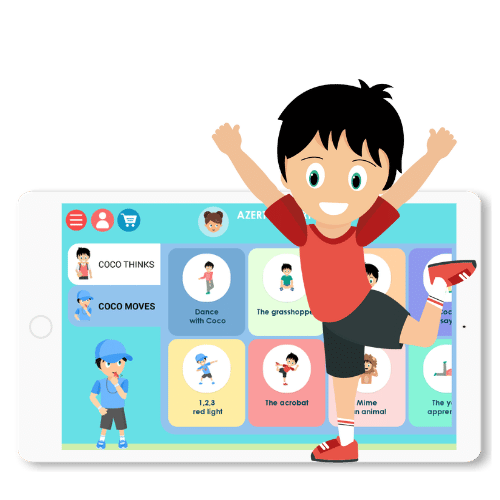
It’s important to note that while technology can be a powerful tool to support children with autism, it should never replace human interaction and therapy. It’s important for parents and caregivers to work with qualified professionals and use technology as a supplement to other interventions and therapies.
Here are some ressources that can help you:
- ed Disorders (CARD): https://www.centerforautism.com/
- Autism Learning Partners: https://autismlearningpartners.com/
- Easterseals: https://www.easterseals.com/
- Trumpet Behavioral Health: https://tbh.com/
- Autism Spectrum Therapies: https://autismtherapies.com/
- Behavioral Innovations: https://behavioral-innovations.com/
- Butterfly Effects: https://www.butterflyeffects.com/
- Gateway Learning Group: https://www.dynseo.com/en/when-is-autism-diagnosed-and-how/
- Hopebridge: https://www.hopebridge.com/
- Verbal Beginnings: https://www.verbalbeginnings.com/
To go further, use the COCO THINKS and COOC MOVES app with your autistic child
Which therapies can help a child with autism?

Understanding the emotions of a person with autism
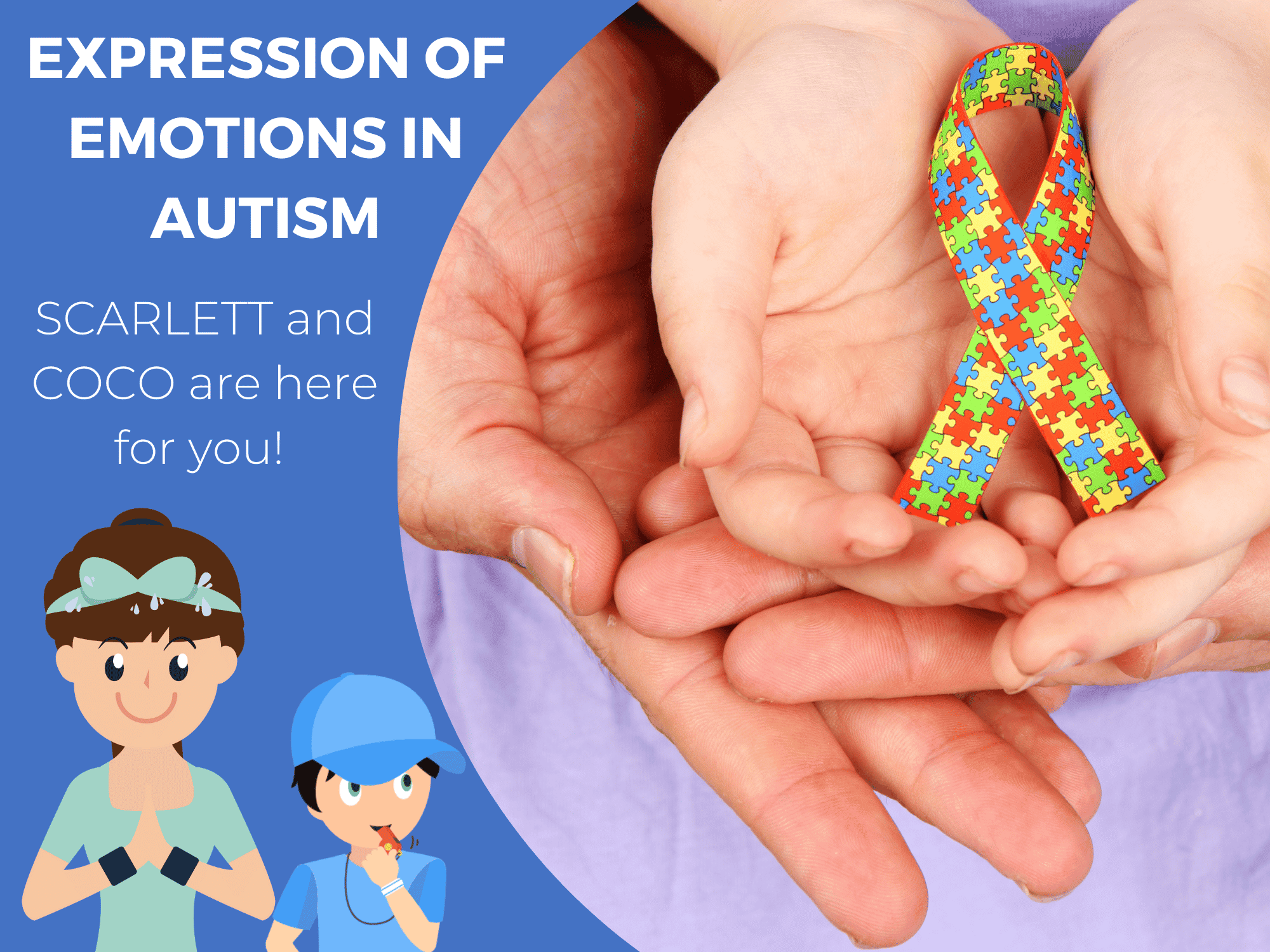
Other articles you might be interested in:
Supporting children with autism
Dynseo proposesSUPPORTING CHILDREN WITH AUTISM with COCO THINKS AND COCO MOVESDynseo and its team are very much...
Supporting DYS children with COCO THINKS and COCO MOVES
Dynseo proposesDYS disorders with COCO THINKS and COCO MOVESOur educational and pedagogical games program COCO THINKS...
Language development
Children communicate from birth with movements, crying, looking at each other or with smiles. After only a few months,...
Supporting children with Down Syndrome with Coco
Dynseo proposesDOWN SYNDROME with COCODown syndrome is a non-hereditary chromosomal abnormality that leads to the...
Supporting people after a stroke
Dynseo proposesStroke with CLINT, your brain training coachThe Dynseo team is very involved in helping people who have...
Supporting someone with Alzheimer’s
In this guide, we will detail how SCARLETT can be used for supporting someone with Alzheimer's. SCARLETT is a...
10 myths about the human brain you didn’t know
The brain is an incredible muscle, however there are many things we do not know, and what we do know is not always...
Using Digital Tools to Support Students with Special Educational Needs
Special Educational Needs (SEN) encompass a wide range of learning difficulties and disabilities that can hinder a...
Down Syndrome and Communication: Facilitating Interaction with Visual and Interactive Supports
When we think about Down syndrome, we often recognize it as a genetic condition that affects physical and cognitive...
How to Track Progress in People with Down Syndrome Using Digital Tools
Down syndrome, a genetic condition caused by the presence of an extra chromosome 21, affects approximately 1 in every...


